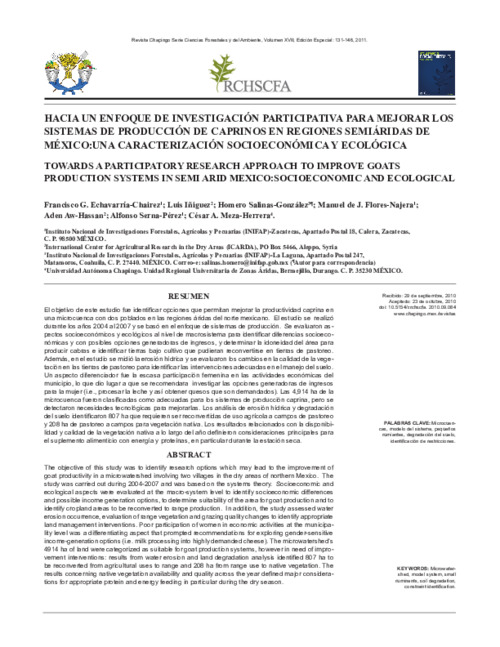Towards A Participatory Research Approach To Improve Goats Production Systems In Semi Arid Mexico: Socioeconomic And Ecological
Abstract
The objective of this study was to identify research options which may lead to the improvement of goat productivity in a microwatershed involving two villages in the dry areas of northern Mexico. The study was carried out during 2004-2007 and was based on the systems theory. Socioeconomic and ecological aspects were evaluated at the macro-system level to identify socioeconomic differences and possible income generation options, to determine suitability of the area for goat production and to identify cropland areas to be reconverted to range production. In addition, the study assessed water erosion occurrence, evaluation of range vegetation and grazing quality changes to identify appropriate land management interventions. Poor participation of women in economic activities at the municipality level was a differentiating aspect that prompted recommendations for exploring gender-sensitive income-generation options (i.e. milk processing into highly demanded cheese). The microwatershed's 4914 ha of land were categorized as suitable for goat production systems, however in need of improvement interventions: results from water erosion and land degradation analysis identified 807 ha to be reconverted from agricultural uses to range and 208 ha from range use to native vegetation. The results concerning native vegetation availability and quality across the year defined major considerations for appropriate protein and energy feeding in particular during the dry season

